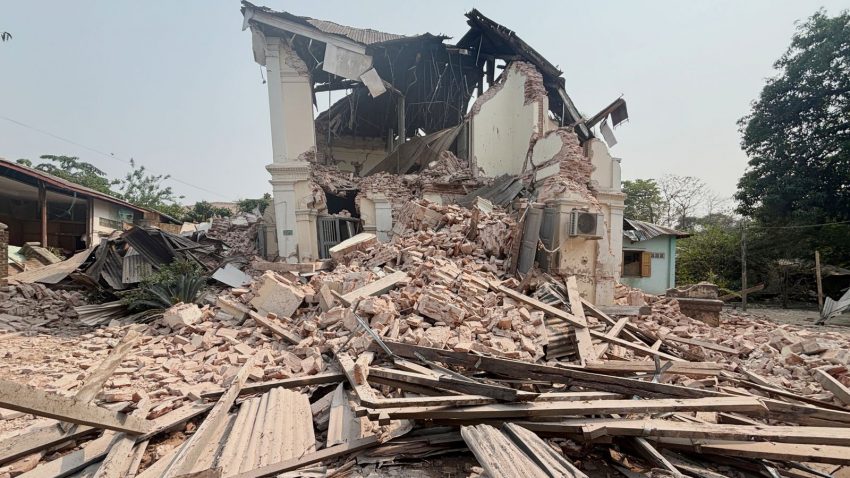The world’s highest mountain range – the Himalayas – is a testament to the power of plate tectonics.
Forced upwards by the gradual northward push of the Indian plate into the Eurasian plate.
It’s a power that’s almost impossible to imagine until just a tiny fraction of it is suddenly released.
Latest updates on Myanmar’s earthquake
And that’s what happened just six miles beneath the feet of 1.2 million people living in Myanmar’s city of Mandalay and surrounding settlements.
A fault line along that Indian-Eurasian plate boundary runs almost directly beneath the city.
Over decades, as the plates grind past each other, tension builds up in the subsurface rock.
When it finally gives, an earthquake is the result.
How powerful was Friday’s quake?
Such strike-slip faults, as they are known, do not generate the world’s most powerful earthquakes.
That dubious honour goes to subduction zones in places like Sumatra and Japan that generate the magnitude 9 earthquakes that caused the Boxing Day tsunami of 2004 or the Tohoku tsunami of 2011.
A magnitude 7.7 quake is still extremely powerful and destructive if it occurs shallow in the Earth’s crust and close to population centres.
Friday’s quake did both.
Read more from Sky News:
King seen in public for first time since hospital visit
Boost to living standards but surge in costs looms large
Recent history has an important role to play too.
Large earthquakes in this region happen every decade or so. But the last one of this size in the Sagaing region was in 1946.
That predates the development of modern earthquake building codes.
Reconstruction in Mandalay and beyond after that event will have resulted in buildings constructed vulnerable to collapse from shaking of this magnitude – and possibly already weakened by previous events.


